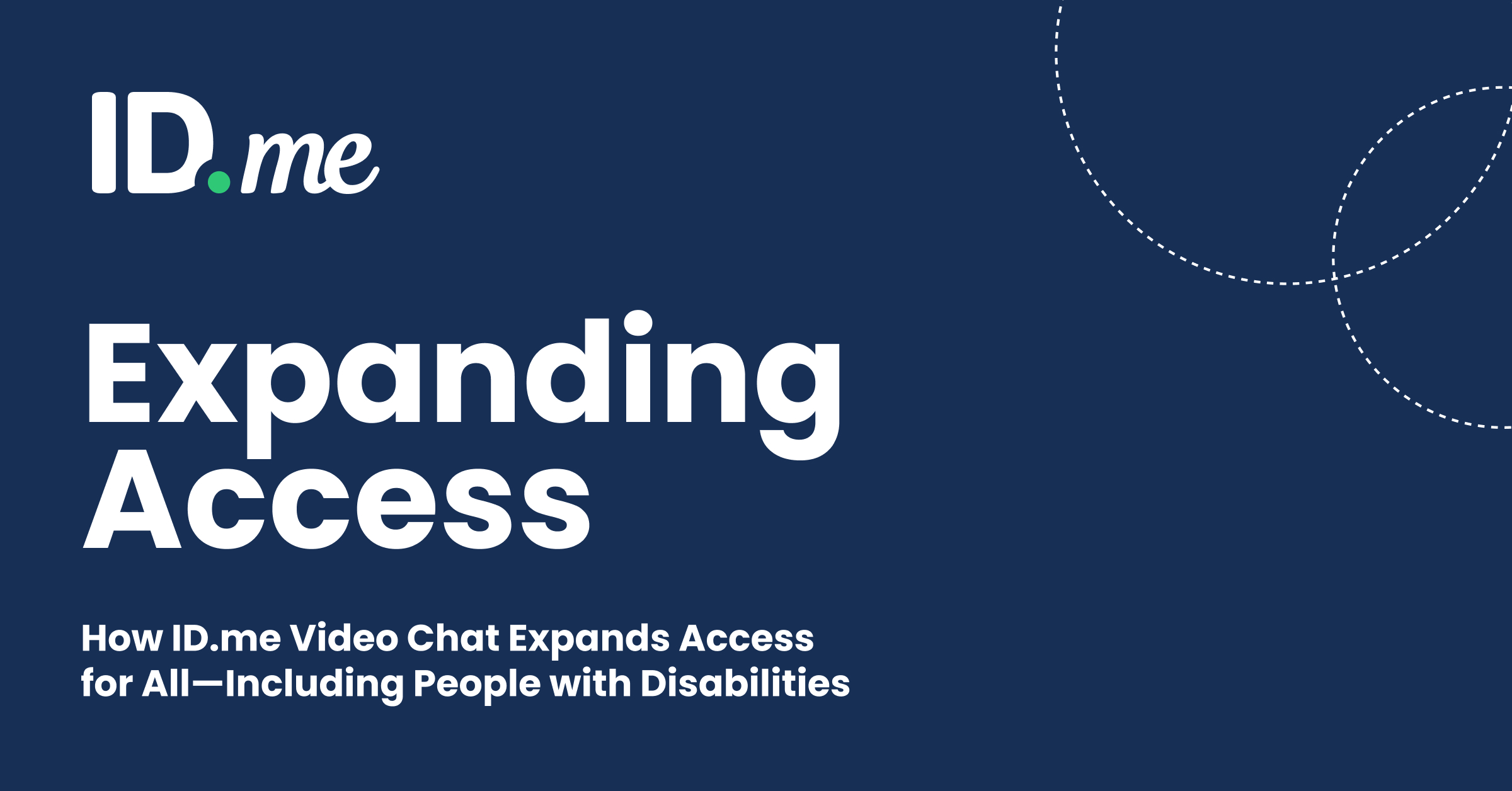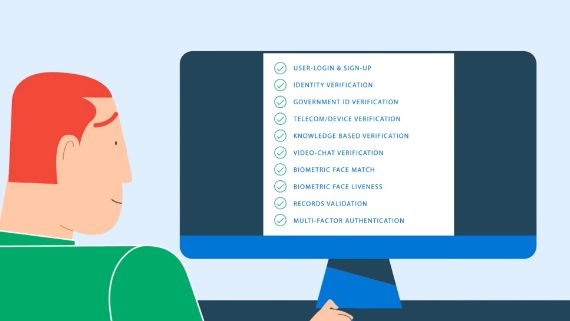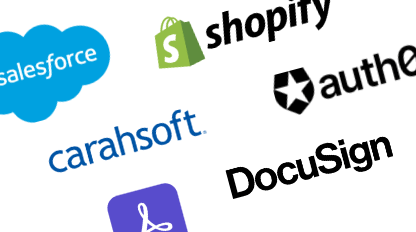Expanding Access: How ID.me Video Chat Expands Access for All — Including People with Disabilities

When an 18-year-old with a developmental disability needed to apply for Supplemental Security Income (SSI), his mother reached out to ID.me for help. He had just become an adult and didn’t yet have a presence in online records, making it difficult to verify his identity through traditional methods.
Instead of visiting a Social Security field office, the family joined an ID.me video chat session. During the call, the young man answered the verification questions himself, while his parent provided support and clarification to complete his verification.
In another case, a non-speaking user with cerebral palsy verified her identity when ID.me Member Support successfully linked to her parent’s verified account using a birth certificate.
These stories are just two of millions that highlight how ID.me’s video chat solution expands access for people who have historically faced barriers to verifying their identity online, including:
- Unbanked individuals or those with thin/incorrect credit files
- People living overseas or using non-U.S. data sources
- Speakers of less common languages, beyond English and Spanish
- Members of tribal communities
- Individuals with intentionally small digital footprints (e.g., security professionals)
- People with disabilities using assistive technology like screen readers, keyboard-only navigation, captions, American Sign Language, or read-aloud software
- Individuals with facial differences
- Older adults and seniors who experience usability or technology-access challenges
- People experiencing homelessness or housing instability without consistent addresses
ID.me’s video chat verification process was built in 2019 in collaboration with the Department of Veterans Affairs (VA), the U.S. Digital Service (USDS), and the National Institute of Standards and Technology (NIST). The first member to verify their identity to NIST standards was an aging veteran living in Japan who had been previously unable to access his VA benefits online.
This month, ID.me reached a major milestone: 13 million people have verified their identity through a live video chat with one of our Trusted Referees. Among them are countless disabled individuals, such as those who are blind, have learning disabilities, don’t use a mouse, and others who might otherwise have faced barriers to access critical benefits and services.
Meeting Users Where They Are
For many people, including those with disabilities, traditional identity verification pathways can be challenging or inaccessible. Some individuals may communicate in a language other than English or require help from an assistant or legal guardian during the process — circumstances that automated, algorithm-only systems aren’t able to support. Through video chat, users connect with a live, trained agent who can adapt communication methods, help clarify instructions, and provide individualized support.
ID.me’s Member Support and Customer Success teams also collaborate directly with advocacy groups that assist Social Security Disability Insurance (SSDI) and Supplemental Security Income (SSI) applicants. These partnerships ensure that users with disabilities — and their family members or guardians — can complete secure identity verification without needing to visit a government office or call center.
“Social Security applicants benefit especially from ID.me offering verification through a video call. This flexibility helps level the playing field for underserved communities.”
– David Camp, Senior Policy Advisor and General Counsel, National Organization of Social Security Claimants’ Representatives (NOSSCR)
“Many of my clients are young adults with developmental disabilities applying for Supplemental Security Income. Without credit histories, they can’t verify their identities online. ID.me’s video chat has been vital in helping them complete the SSA process and access their benefits.”
– Alexandra Baig, CFP®, ChSNC®, EDPNA, Pathways to Benefits
ID.me’s Commitment to Access and Inclusion
At ID.me, we’re committed to making sure that every person, no matter their ability, background, or circumstance, can verify their identity securely and confidently. Video chat is a vital resource for users who need human assistance and a key part of ID.me’s effort to ensure everyone can verify their identity through a digital channel.
To ensure digital identity verification is accessible to everyone, ID.me embeds accessibility into every stage of design and development. All employees complete mandatory, role-specific accessibility training, reinforcing our commitment to inclusive design across the organization. We also conduct user testing with people with disabilities to ensure our solutions meet real-world needs and expectations. We hold ourselves to the highest standards through recurring independent audits by industry leader Level Access and regular reviews by government agencies, demonstrating transparency, accountability, and continuous improvement in our accessibility practices.
“As a blind person, I wasn’t sure how the camera process would work for the identification process, as I cannot make eye contact with the camera. When I read the warning about photosensitivity – that the screen would show various colors in quick succession – it was evident that ID.me had taken accessibility seriously. The process was so smooth that I’ve often told people it’s a model for other organizations to follow.”
– Corbb O’Connor, Director of Accessibility, Level Access and President, National Federation of the Blind of Minnesota
By enabling more users to access agencies via digital channels, ID.me’s digital verification video chat pathway is also unlocking operational efficiencies. By reducing demand on agency call centers and field offices and putting more users through lower-cost-to-serve digital channels, agencies can reinvest savings into mission-critical programs and services that directly benefit the public.
To learn more about how ID.me is expanding access to ensure that No Identity is Left Behind, explore:



